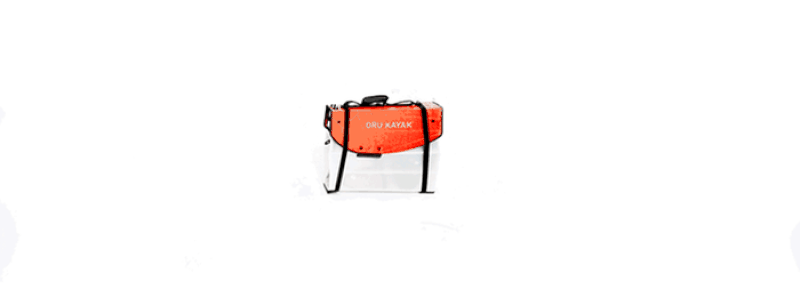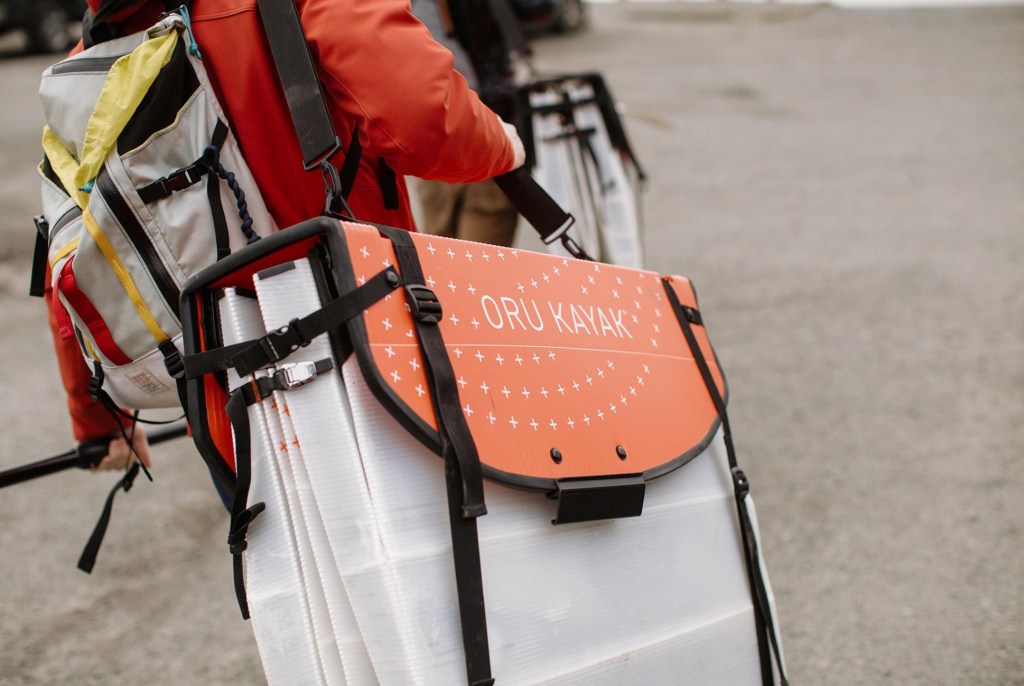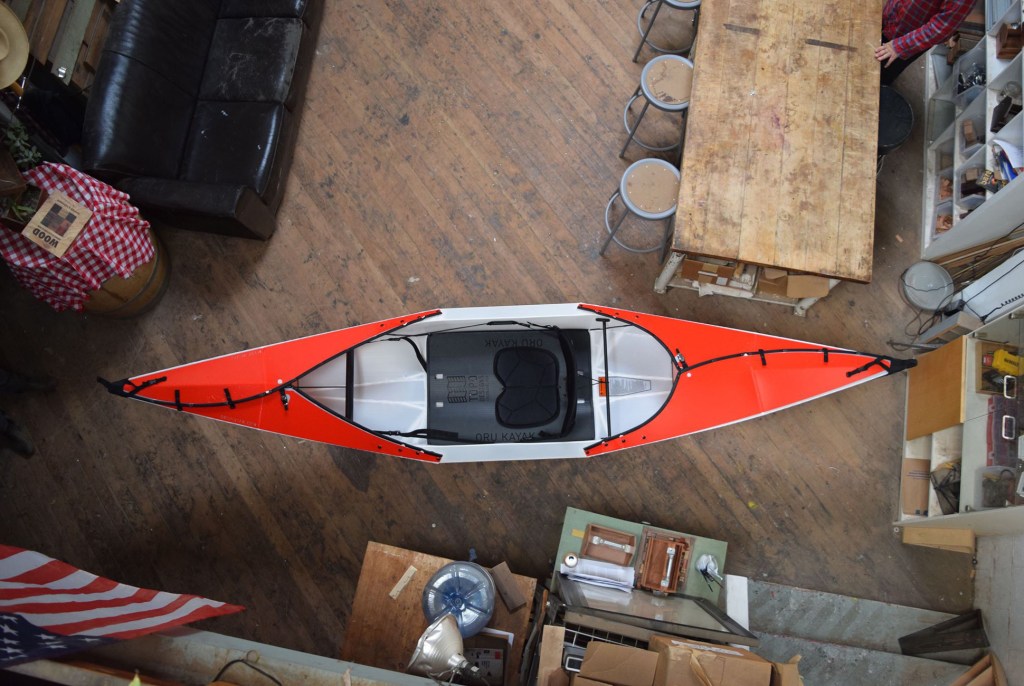Interview: Oru Kayak

Anton Willis moved to the Bay Area in 2002 and immediately encountered the struggle of getting outside while living in a large metropolitan city. Paddling solved that problem, but only until San Francisco rent prices forced him to move into a studio apartment — an ill-suited home for a sixteen-foot kayak.
Willis was leafing through the pages of The New Yorker five years later and came across an interesting article. The piece profiled Dr. Robert J. Lang, a physicist who became obsessed with the art of origami and eventually quit his fiber optics job in order to pursue it full time. Dr. Lang folded everything from anatomically correct paper insects to a NASA space telescope lens.
That’s why, shortly after reading that article in The New Yorker, Willis started making kayaks out of folded paper. He began with printer paper, then moved on to cardboard, and finally to that same corrugated plastic used to make lawn signs and U.S. Postal Service tote boxes (Oru kayaks are still made from a similar material). “The first kayak was made out of one sheet duct taped together and I took it down to the Berkeley Marina, got in, made a few paddle strokes and sunk after about 30 seconds.”

Despite the failure, Willis persevered with his folding. He brought subsequent prototypes to barbecues where friends took turns paddling around. Soon he was confronted with a choice: leave the folding kayak as a side project or admit he was becoming a businessman and attempt to bring the boat to market. He decided on the latter.

Willis found a partner, moved the prototype shop from his buddy’s garage to a maker space in San Francisco, raised nearly half a million dollars in what was the biggest crowdfunding campaign for an outdoor product at the time, and locked down a manufacturer to build the first run of folding kayaks. Easier said than done of course. We caught Willis in a rare moment of free time and chatted about the challenges he faced and the insights he gained while creating the folding vessel that’s redefined paddling.
Q: Was there a specific moment after reading the origami article when you thought about building a kayak?
There was a moment when I asked myself the question, “Could a kayak fold up like a piece of paper?” The middle part could be figured out but I didn’t know how the ends would work. I had this idea in my head and took a business card out of my wallet and folded it up, and that’s how the ends still work. That was kind of the first folding test and the first design challenge that was solved, probably a day or two after I read the article.
Q: What was the biggest roadblock that came up in the design process?
The biggest one was figuring out how to make the case and boat work at the same time. The early prototypes just kind of folded up into this crazy bundle of loose plastic. For a while I lived with that, but then I had the idea that it could actually become a box that would be more self contained, would look okay, and that you could put other accessories into. That was a really exciting idea, but figuring out how to go from one to the other took a lot of doing. The earlier kayaks were more like accordions, and now there’s this more complex motion where the whole thing kind of snaps together. That took a complete re-engineering of all the box folds.
Q: How many iterations did you go through before the first consumer-ready kayak was done?
About 25.
Q: Did materials influence or guide the design process?
The material we use now is a close relative of what we started with, but custom made to our specs so it’s heavier duty. At times it has been an issue — we’ve gotten bad batches from the manufacturer that suddenly started cracking when we’re building the kayaks in the factory, which is not good for something that can leak.

Q: What fundamental problem does the Oru Kayak solve?
The fundamental problem it solves is that boats are large, and that limits where you can take them. For me, it was originally about being able to store a kayak in my apartment closet. At the same time, I would take it on the subway and put it in the trunk of my small sedan. We sell a backpack that goes with it that’s fully ergonomic and can be used for hiking, so you can hike into a mountain lake that’s not accessible by road and paddle in places where no one has ever paddled before. People have come up with some other interesting things: They have put them on prop planes and float planes to fly into remote lakes or fjords. I’ve seen it on the backs of motorcycles, there’s a lot of places it can go.
Q: Do you have a favorite spot to paddle?
My favorite is a river trip on the Eel River in northern California, which is where I grew up. It’s a very remote section of river. But my go-to these days from the Bay Area is Tomales Bay, which is about an hour north of San Francisco. In the late summer, it’s bioluminescent, so it can be really spectacular.
